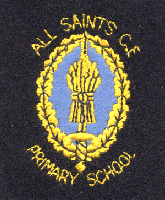|
Part Two..cont Outside the school was the house occupied by the headmaster, and a rather forbidding house it always seemed to me with the almost mystic Roman numerals above the door indicating the year of construction. I memorised those letters and can still recite MDCCCLXXXVIII - [1888 if my calculation is correct!]. Every year we had a prize-giving ceremony and the prizes were given by Mrs. Macnair who lived up the road in what must be one of the most inappropriately named houses in Marple. I used to wonder as I walked past, how such a grand house could be named ~ Shanty” - it seemed as incongruous as naming Buckingham Palace “The Mall Transport Cafe”. However, God bless Mrs. Macnair for her generosity, and the one prize I have won in my life still sits proudly on the bookshelf “Stories by Rudyard Kipling” for “Success in History and Geography, July 1941”. There are still many members of my old class living in Marple who have seen many changes to the district since we left All Saints’ in 1943. In spite of the road signs indicating “Town Centre” Marple is still referred to as “the village” and even if local government places us as part of Stockport, the identity with Marple had its’ roots at All Saints’ when it was the school of the community. 1937 Name Roy Stewart Headteachcr Mr. Revill. “My first teacher was Miss Dobson and after two years in the Primary part of the school graduated to the playground at the Church Lane end of the school. At the time we lived on the corner of Willow Grove and Lyme Grove, opposite a small farm which used to be there. I distinctly remember the farmyard smells that drifted across on a summer evening. The Headmaster at the time was Mr. Revill, a corpulent unapproachable man, who was held in great esteem by the staff, and fear and dread by the pupils. He lived next door to the school in the house on the Church Lane side. I presume that in those days the house went with the job. We had a teacher by the name of Miss Brown, we considered her quite old, I think that she was probably about 20,and was engaged to another teacher, Mr. Stead, who was called up into the army, and we never heard of him anymore. We had to carry our gas-masks to school and occasionally sit with them on. I hated that because they would fog up inside and you couldn’t see a thing. When the air raid sirens went we were all marched out in columns of two, up Church Lane towards the church, then turned off right to a field where the air raid shelters were. I distinctly remember the noise that the rooks made in the churchyard. The shelters were in the ground, we thought that they were like submarines, they had long rows of seats, at the end of the shelter there was a ladder into what looked like a conning tower, presumably an escape hatch. Soon after Dunkirk, I hope that my memory is not at fault here, the headmaster called us all to assembly and told us that before very long we may have the Germans in charge. I also remember another occasion when he called us all together to announce that the Bismark had been sunk. One of my friends at school, his name was Peter Wilson, had a brother who was the wireless operator on HMS Hood, so we remembered when she got sunk. |
|||||||||||||
